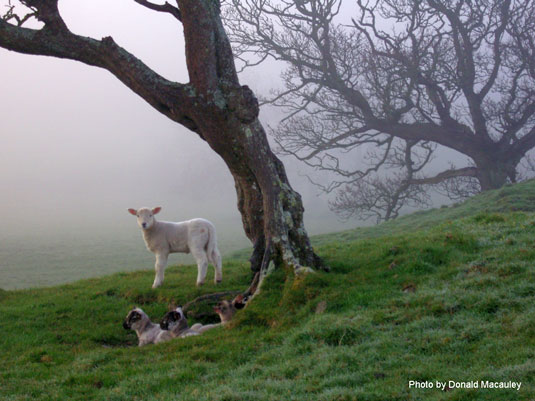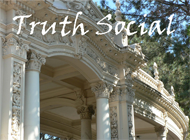 As with many churches during this time of year, our pastor is completing an Advent series. Advent means “the coming” and during Christmas time, we celebrate God’s promised Messiah, who will one day establish an earthly kingdom in Jerusalem.
As with many churches during this time of year, our pastor is completing an Advent series. Advent means “the coming” and during Christmas time, we celebrate God’s promised Messiah, who will one day establish an earthly kingdom in Jerusalem.
But thou, Bethlehem Ephratah, [though] thou be little among the thousands of Judah, [yet] out of thee shall he come forth unto me [that is] to be ruler in Israel; whose goings forth [have been] from of old, from everlasting. Micah 5:2 KJV
Christians celebrate Christmas as the first part of that promise, when Christ came to earth the first time as a human baby. His entry into the world was anything but conventional. He was supernaturally placed into the womb of a young girl. By the time she was to deliver, she and her husband had traveled to Bethlehem because the Roman ruler decreed that everyone should go to the town of his family to be recorded for the census. The familiar story is beautifully described in the Gospel of Luke.
And she brought forth her firstborn son, and wrapped him in swaddling clothes, and laid him in a manger; because there was no room for them in the inn. And there were in the same country shepherds abiding in the field, keeping watch over their flock by night. And, lo, the angel of the Lord came upon them, and the glory of the Lord shone round about them: and they were sore afraid. And the angel said unto them, Fear not: for, behold, I bring you good tidings of great joy, which shall be to all people. For unto you is born this day in the city of David a Saviour, which is Christ the Lord. And this [shall be] a sign unto you; Ye shall find the babe wrapped in swaddling clothes, lying in a manger. Luke 2:7-12 KJV
In our Advent study, the pastor brought up some interesting points. How did the shepherds know where to find the baby? Were they expected to roam all over the city of Bethlehem, looking in every stable until they found him? Because the word “manger” can also be translated “stall” the natural assumption is to guess that Jesus was born in a barn, or a stable. Many people are comfortable with that because it shows that Jesus had a lowly birth. We know from Luke that Jesus was placed in a feeding trough for animals (manger), so a barn makes sense, but does it really mean that Jesus was born in the stable behind the local motel? That seems a bit random, especially if the “inn” has no significance. Since God always has a reason behind everything he does, it makes more sense that the place Jesus was born must be significant in some way.
Some Bible scholars think that the birth might have taken place at Migdal-Edar (also spelled Migdal Eder), which translated from Hebrew is “tower of the flock.” This was a proper name used to designate a shepherd’s watchtower near Bethlehem (reference Blue Letter Bible), which is mentioned in two Old Testament passages. The first reference is in Genesis and describes the tower’s location with respect to Rachel’s tomb.
And they journeyed from Bethel; and there was but a little way to come to Ephrath: and Rachel travailed, and she had hard labour. And it came to pass, when she was in hard labour, that the midwife said unto her, Fear not; thou shalt have this son also. And it came to pass, as her soul was in departing, (for she died ) that she called his name Benoni: but his father called him Benjamin. And Rachel died, and was buried in the way to Ephrath, which [is] Bethlehem. And Jacob set a pillar upon her grave: that [is] the pillar of Rachel’s grave unto this day. And Israel journeyed, and spread his tent beyond the tower of Edar. Genesis 35:16-21 KJV
Ephrath is another name for Bethlehem, and means both “ash heap” and “place of fruitfulness” bringing to mind the verse in Isaiah which speaks of the Messiah fulfilling God’s promise to restore Israel and bring beauty from ashes.
To appoint unto them that mourn in Zion, to give unto them beauty for ashes, the oil of joy for mourning, the garment of praise for the spirit of heaviness; that they might be called trees of righteousness, the planting of the LORD, that he might be glorified. Isaiah 61:3 KJV
Some other interesting tidbits tucked away in this historical passage, are the names that Rachel and Jacob give to their son. Benoni means “son of my sorrow” while Benjamin means “son of the right hand.” Interesting that Jesus was called a man of sorrows, and also sits at the right hand of the Father.
A second reference to the tower of the flock comes from the book of Micah and seems to indicate that the tower and the first appearance of the Messianic kingdom/rule are connected.
And thou, O tower of the flock, the strong hold of the daughter of Zion, unto thee shall it come, even the first dominion; the kingdom shall come to the daughter of Jerusalem. Micah 4:8 KJV
So, according to Micah, this place called Migdal-Edar, or tower of the flock, carries not only some significance, but also a promise. Considering this verse, might it be likely that the angels would have proclaimed the fulfillment of the promise to a certain group of people who would understand the significance?
Dr. Alfred Edersheim, author of The Life and Times of Jesus the Messiah, believed the Mishnah (Jewish oral law first recorded) provided some pertinent information about Migdal-Edar. “A passage in the Mishnah leads to the conclusion that the flock which pastured there were destined for Temple sacrifices, and, accordingly, that the shepherds that watched over them were not ordinary shepherds. The same passage also leads us to infer that these flocks lay out all year round, as they are spoken of as “in the field” 30 days before Passover, that is in February, when in Palestine the rainfall is nearly greatest.” (R.F. Hutchinson, M.D., The Palestine Exploration Fund, Quarterly Statement, April 1887, pp. 167-169)
In a second reference to the shepherds, Rabbi Short writes, “We know that Migdal Eder was the watchtower that guarded the Temple flocks-those who were being raised to serve as sacrificial animals in the Temple. These were not just any flock and herd. The shepherds who kept them were men who were specifically trained for this royal task. They were educated in what an animal that was to be sacrificed had to be and it was their job to make sure that none of the animals were hurt, damaged, or blemished.” (Migdal Eder, Rabbi Mike L. Short, Beth El Messianic Congregation, Glendale, AZ)
Another writer comments, “…many of the rabbis taught that Messiah might well be announced from ‘Migdal Edar’ at Bethlehem. The angels only told the shepherds that they would find the Babe wrapped in ‘swaddling clothes and lying in a manger’…the sign of a manger could only mean their manger at the tower of the flock!” (Where was the Birth Place of the Lord Jesus? Cooper P. Abrams III)
Is it possible that Jesus might not have been born in a dirty stable full of animals behind a non-descript inn, as we are generally taught? Is it feasible that the Lamb of God, who takes away the sins of the world, was actually born in a ceremonially-clean stable at the tower of the flock-the same place used for birthing sacrificial lambs? Could it be that the shepherds knew exactly where to find the baby wrapped in the same strips of cloth they used to protect newborn lambs from harm? Might the birth of Jesus at this tower fulfill the promise found in the book of Micah?
Something to think about this Christmas….
References:
“Migdal-Edar” Blue letter bible reference http://www.blueletterbible.org/lang/lexicon/lexicon.cfm?Strongs=H4029&t=KJV
“Migdal Eder” Rabbi Mike L. Short http://www.mayimhayim.org/Rabbi%20Mike/Migdal%20Eder.htm
“Where was the Birth Place of the Lord Jesus?” Cooper P. Abrams III, http://bible-truth.org/BirthPlaceofJesus.html
Linking up today for Thought Provoking Thursday at Some Girls Website: www.somegirlswebsite.com
On the journey toward Home,












{ 2 comments… read them below or add one }
every time I read this it is more meaningful and beautiful. How disappointing it was when I went to feed our horses, thinking it wasn’t in a barn or stable like mine. How overwhelming it was when I realized what better place Our Lord was to be laid, in a manger deserved for lambs to be sacrificed.
Thanks for your comment Glenn. God’s plan of redemption is amazing, isn’t it? The Son of God became human so that we could become sons and daughters of God.